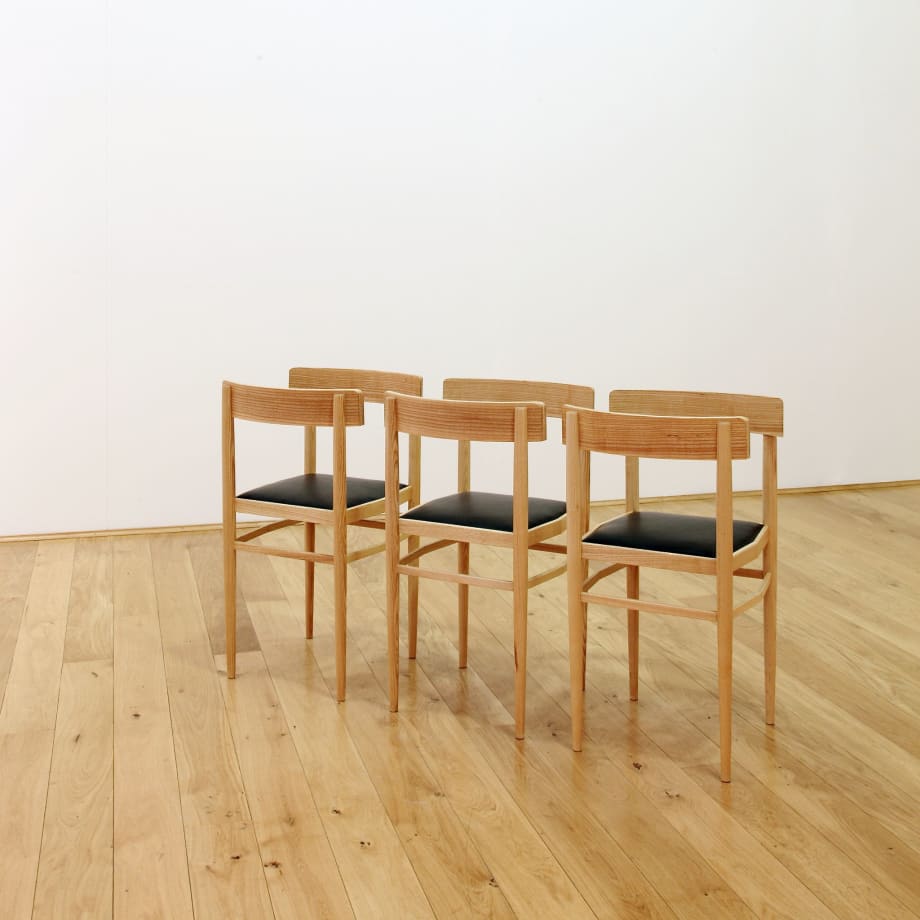Richard Rigg’s sculptures reproduce and manipulate everyday objects, transforming them into reflexive propositions and theoretical paradoxes. Employing culturally resonant objects that signify the foundations of our civilization through drawing upon the histories of science, mathematics and literature, Rigg pitches reason against itself, elegantly and iconoclastically undermining our own rational basis, yet suggesting an ulterior route. Rigg’s reductive, minimal works open up potential meanings and ontological possibilities. Attempts to pin the works down into an exact reading are thwarted through their elliptical conceptualism. In this work, there is a direct meeting of it’s beginning, with its end.
In this new body of work, Rigg explores ideas of time and place, challenging us to consider something that exists just beyond our perception, at the very edge of possibilities. I forgot what was said when we were outside, stood empty, now without those words I fell back, consists of two full size telegraph poles stood upright in the stairwell of the gallery, the telephone line hanging loosely between them becoming the memorial of a brief excerpt of conversation between the artist and an anonymous but significant other. The title of the work taken from the disjointed notes scribbled down by the artist during the call in an attempt to remember. Latent Morning is a semi-folded mirror image replica of one the original sash windows in the attic space of The Old Post Office, Workplace Gallery’s late 19th century location. Installed against the wall and floor, and out of sight of the original the new window becomes a distant echo of its subject. Referencing a shaft of light projected on a wall opposite, Latent Morning evokes a sense of quiet ennui, reminiscent of those occasional still moments of heightened perception before thought and responsibilities have come to mind. Some rest on 6 occasions (February View) is a line of three identical double backed ash chairs that describe the impossible position of six seats taking the place of three. The hybrid form is based on the simple functional designs of Danish designer Børge Mogensen and his contemporaries, an inverted play on the rationality of the functionalist aesthetics they commonly held. This attempt to refer to an interpretation of an aspect of experience and the problems associated with it is evident in The Fort was there before it was built, a cyanotype print of the shadow of a complex mathematical non-alternating amphichiral knot with 15 crossings, impossible to fathom when rendered in its two dimensions. In a group of 3 works Rigg has coerced the gallery building to be complicit in a deception. Wall Hanging is a negative cast of a Victorian coat hook set into the gallery wall, in a deadpan parody of the use of the void in 20th century abstract sculpture Wall Hanging implies the hanging of the gallery on the work playfully elevating the status of the architecture surrounding the to the work itself.
This One, The Next, and The One After That is a drip of water released precisely every minute from a handmade quartz clock with a suspended water tank mechanism, installed in the ceiling above. The Broken Appearance of the Floor consists of two oars improbably poised in the position of rowing connoting the absence of both rowing boat and oarsman, the blades seemingly dipped into the floor, as they propel nothing, no-where. This sense of poetic absence is also present in Cloth arranged to look like a Jacket (Self Portrait) the title descriptively candid of an anti-heroic sculptural strategy to depict a jacket left where dropped on the floor, the imagistic isolation of this reproduction and admission of materiality and process enabling the work to gain metaphorical weight through its surrogacy for the real thing. In The Gate Black two identical tables instantly reminiscent of school furniture occupy the same space with one the
‘right’ way up and the other on its side. A wax tablet held together with a broken arrow adjoins the tables the work exploring the origin and evolution of things by connecting objects both linguistically and formally. Through the isolation and manipulation of everyday objects, faithfully reproduced or dissected, Rigg’ collapses and conflates function through reductive and apophatic logic, eliciting poetic meaning by the implication of latent usage or absence.


